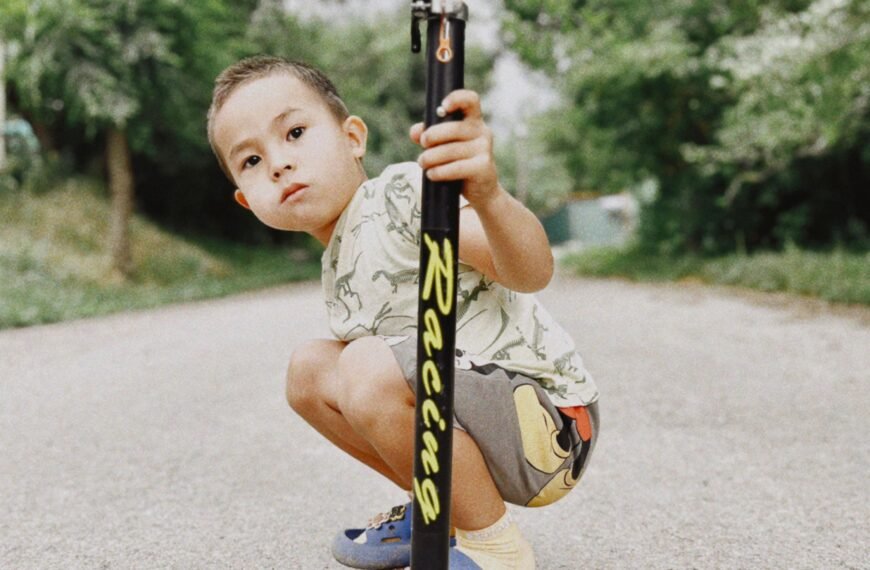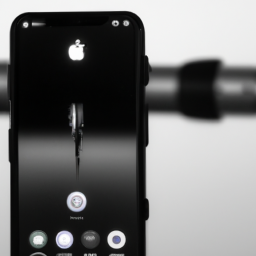You’re a parent with a living room overflowing with baby toys and you’re looking for a solution to keep them in order. In this article, we’ll explore some practical and creative ideas on how to organize your little one’s toys in the living room, allowing you to maintain a tidy and clutter-free space while still providing an accessible and engaging environment for your child to play and grow. Say goodbye to tripping over scattered toys and hello to a well-organized living room that brings joy to both you and your baby!
Check Baby Toys Guide & Review
Clearing and Decluttering
Remove unnecessary toys
To start organizing your baby toys in the living room, the first step is to remove any unnecessary toys. Get rid of broken toys or ones that your child has outgrown. Decluttering will create more space and make it easier to organize the remaining toys.
Sort toys by age and type
After decluttering, sort the remaining toys by age and type. This will help you later when organizing and storing them. Grouping toys by age ensures that your child can easily find toys that are suitable for their developmental stage. Sorting by type will make it easier to locate specific toys when your child wants to play with them.
Create a designated toy storage area
To keep the living room organized, it’s important to create a designated toy storage area. This could be a specific shelf, a toy chest, or a storage bin. Having a designated area will help you and your child know where toys belong and make cleanup a breeze.
Choosing the Right Storage Solutions
Consider safety and accessibility
When choosing storage solutions for your baby toys, it’s important to consider safety and accessibility. Look for storage bins or baskets with rounded edges to prevent any potential injuries. Additionally, choose storage solutions that are easily accessible for your child, so they can independently retrieve and put away their toys.
Opt for storage bins and baskets
Storage bins and baskets are great options for organizing baby toys. They come in a variety of sizes and materials, making it easy to find ones that suit your needs. You can use them to store toys by type or even dedicate a bin or basket to each specific toy category.
Utilize wall shelves and hanging organizers
Another excellent storage solution is utilizing wall shelves and hanging organizers. Wall shelves provide a space-saving option for displaying and storing toys, while hanging organizers allow you to utilize vertical wall space. These options can help keep your living room organized and free up valuable floor space.

Separating Toys by Function and Size
Categorize toys based on function
To make finding and organizing toys easier, categorize them based on their function. For example, have a separate section for stuffed animals, building blocks, and puzzles. This will not only help your child find the toys they want to play with, but it will also make cleanup more efficient.
Arrange toys based on size
In addition to categorizing toys by function, arrange them based on size. Larger toys can be placed on the bottom shelves or in the toy chest, while smaller toys can be stored in bins or baskets. This way, you can optimize your storage space while keeping everything organized and easily accessible.
Utilize storage containers with dividers
To help further separate and organize smaller toys, consider using storage containers with dividers. These containers allow you to create individual compartments within the container, making it easier to keep small toys organized and preventing them from getting mixed up.
Labeling and Organizing
Use clear and descriptive labels
Labeling your toy storage bins or shelves is essential for easy organization. Use clear and descriptive labels that indicate what types of toys are stored in each container or shelf. This will not only make it easier for you to find specific toys, but it will also make cleanup a breeze when your child knows exactly where each toy belongs.
Implement a rotation system
To prevent toy overload in the living room and keep your child engaged with their toys, implement a rotation system. This means periodically switching out toys to ensure a variety of options. Label separate storage containers for rotated toys and swap them out regularly. This will keep your child excited about their toys and prevent the living room from becoming cluttered.
Keep frequently used toys at eye level
When organizing your baby toys, consider keeping frequently used toys at eye level. This makes it easier for your child to find and choose their toys independently. Place these toys on lower shelves or in easily accessible bins, ensuring that your child can reach them without assistance.

Utilizing Hidden Storage Spaces
Utilize ottomans and coffee tables with storage
Maximize your living room’s storage potential by utilizing hidden storage spaces, such as ottomans and coffee tables with built-in storage compartments. These furniture pieces not only provide extra seating or surface space but also offer a discreet way to store toys. This way, toys can be easily accessed and quickly put away, reducing clutter in your living room.
Maximize under furniture storage
Don’t forget about the valuable storage space under furniture! Utilize this often overlooked area to store larger toys or even storage bins. Throwing a decorative skirt or fabric over these storage containers can keep the area looking neat and stylish while keeping the toys hidden from view.
Consider storage solutions within entertainment centers
If you have an entertainment center in your living room, consider incorporating storage solutions within it. You can use the shelves or cabinets to store toys, books, or even a designated toy box. This way, the toys are kept within reach of the play area without taking up additional space in the room.
Creating Play Zones and Stations
Designate separate play areas for different age groups
If you have multiple children of different ages, consider creating separate play areas for each age group. This helps prevent toys from getting mixed up and allows each child to have their own designated space. For example, you could have a corner for older children’s toys and a separate area for baby toys.
Create a reading corner
Incorporating a reading corner into your living room is a great way to organize and encourage reading. Set up a cozy seating area with a bookshelf nearby, and designate it as the reading corner. This not only organizes books in one place but also creates a peaceful space for your child to enjoy reading.
Set up a sensory play station
Sensory play is important for young children’s development. Designate a small area in your living room as a sensory play station, complete with bins of sensory toys, such as playdough, sensory bottles, or a small sand table. This not only provides a specific space for sensory play but also keeps these types of toys contained and easily accessible.

Implementing Toy Rotation
Switch out toys periodically
To keep your child engaged and interested in their toys, it’s important to switch out toys periodically. Rotate toys every few weeks or months to keep things fresh and exciting for your child. This also helps prevent toy clutter in the living room, as you won’t have all toys out at once.
Store rotated toys in a separate area
When rotating toys, store the ones not in use in a separate area. This can be a labeled storage bin or even a closet. Keeping rotated toys separate helps maintain an organized living room while still allowing your child to have access to a variety of toys.
Incorporate a variety of toys with each rotation
When rotating toys, make sure to incorporate a variety of toys with each rotation. This ensures that your child has access to different types of toys, promoting their development and creativity. By offering a well-rounded selection of toys, you can keep your living room organized while still fostering play and learning.
Involving Your Child in the Organization Process
Teach your child to tidy up
One of the most important aspects of organizing baby toys in the living room is teaching your child to tidy up. From an early age, encourage your child to clean up after themselves. Show them where toys belong and how to put them away. By involving them in the tidying process, you not only teach them valuable life skills but also instill a sense of responsibility.
Encourage them to take part in sorting and cleaning
In addition to teaching your child to tidy up, encourage them to take part in sorting and cleaning their toys. Make it a fun and interactive activity by involving them in categorizing toys by type or even helping with labeling. This not only helps keep the living room organized but also fosters a sense of ownership and pride in their belongings.
Make it a fun and interactive activity
To make organizing baby toys enjoyable, make it a fun and interactive activity. Play upbeat music while tidying up, have a “race” to see who can put away toys the fastest, or create a reward system for a job well done. By making organization fun, your child will be more motivated to take part and help keep the living room tidy.
Maintaining an Organized Living Room
Establish a daily cleanup routine
To maintain an organized living room, establish a daily cleanup routine. Set aside a specific time each day, such as before dinner or bedtime, to tidy up and put away any toys that have been used throughout the day. By making cleanup a part of your daily routine, you can prevent toy clutter from accumulating and keep your living room tidy.
Regularly check and declutter toys
As your child grows and develops, their interests and toy preferences may change. Regularly check and declutter toys that are no longer being used or have been outgrown. This will help free up space in the living room and ensure that the toys available are ones that your child enjoys and engages with.
Involve the whole family in keeping the space tidy
Keeping the living room tidy should be a team effort. Involve the whole family in the organization and cleanup process. Assign age-appropriate tasks to each family member, and make it a habit to work together to keep the space organized. By sharing the responsibility, you can maintain an organized living room more effectively.
Decorating and Styling with Baby Toys
Display toys as decorations
Instead of hiding toys away, consider displaying them as decorations in the living room. Choose a few aesthetically pleasing toys and showcase them on shelves, bookcases, or even hung on the wall. By incorporating toys into your decor, you add a playful and personal touch to the room.
Incorporate toy storage as part of the room’s design
When planning your living room’s design, incorporate toy storage as a central element. Choose furniture pieces that serve a dual purpose, such as a bookshelf with toy bins or a storage bench that doubles as seating. This way, toy storage seamlessly blends into the room’s overall design.
Use colorful and playful toy organizers
Add a pop of color and playfulness to your living room with colorful toy organizers. Opt for bins or baskets in vibrant hues or patterns that match your decor style. This not only adds visual interest to the room but also makes toy storage more appealing to your child.
By following these tips and implementing an organized system for your baby toys in the living room, you can create a clutter-free and functional space for both play and relaxation. Remember to involve your child in the organization process, maintain a daily cleanup routine, and make organization enjoyable. With a well-organized living room, you can enjoy quality time with your child while keeping your space tidy and inviting.















